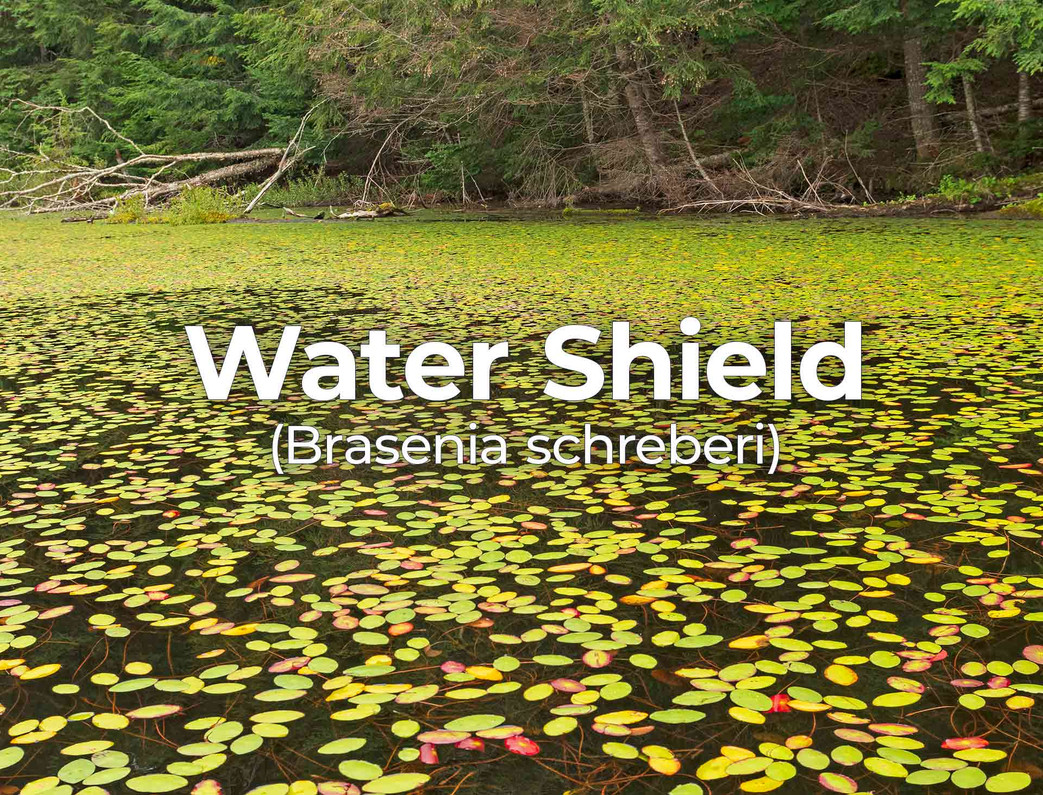Exploring Water Shield (Brasenia schreberi): The Aquatic Weed with a Purpose
Welcome to our blog post where we delve into the fascinating world of water shield, an aquatic weed that holds both beauty and ecological significance. In this article, we will take a closer look at water shield (Brasenia schreberi), its distinct characteristics, its role in aquatic ecosystems, and methods for managing its growth. Let's dive in!
Description of Water Shield:
Water shield boasts captivating features that set it apart from other aquatic plants. Its oval-shaped leaves gracefully float on the water's surface, creating a dense mat of vegetation.
These leaves are adorned with a glossy, leathery texture, with a deep green color on the upper surface and a charming reddish or purplish hue on the lower surface. This enchanting plant thrives in freshwater habitats, including lakes, ponds, and slow-moving streams, primarily found in North America.
Life Cycle and Reproduction:
Water shield exhibits a captivating life cycle. It typically blooms from June to August, adorning the water's surface with delicate flowers. Although these flowers may seem inconspicuous, they possess their own charm, available in shades of pink or white.
The reproductive process of water shield relies on water for pollination and dispersal, allowing this captivating weed to complete its life cycle in harmony with its aquatic environment.
Ecological Importance:
Water shield plays a vital role in maintaining the health and biodiversity of freshwater ecosystems. Its dense mats of vegetation offer shelter and shade to various aquatic organisms, including fish, amphibians, and invertebrates.
Moreover, the submerged portions of water shield provide a valuable food source for waterfowl and herbivorous animals, contributing to the intricate food webs within these ecosystems.
While water shield is generally considered beneficial, its excessive growth can lead to a decrease in dissolved oxygen levels, potentially affecting other aquatic species. Therefore, it is crucial to strike a balance between appreciating its ecological contributions and managing its growth when necessary.
Management and Control:
Various methods can be employed to manage and control water shield growth.
Non-chemical approaches include manual removal by hand or using mechanical tools such as raking or cutting. These methods can help limit the spread of water shield without resorting to chemicals.
In certain cases, chemical methods may be considered as a last resort. Appropriate herbicides can be used, following the recommended guidelines and regulations to ensure minimal impact on the surrounding environment.
It is important to approach water shield management with a careful balance, considering the ecological implications and striving to maintain the overall health of the aquatic ecosystem.
Conclusion:
Water shield, the aquatic weed with a purpose, serves as a mesmerizing addition to freshwater habitats. Its floating leaves and delicate flowers offer not only visual appeal but also important benefits for the aquatic life that depends on its presence.
By understanding the role of water shield and implementing proper management strategies, we can appreciate and preserve the delicate balance of our precious aquatic ecosystems. Let us treasure the beauty and significance of water shield, ensuring a thriving environment for all its inhabitants.
Recent Posts
-
Best Muck Removal Tools for Summer 2025
If you’re tired of stepping into knee-deep sludge every time you walk into the lake, you're no …8th Jul 2025 -
4th of July Lakefront Checklist: Get Celebration-Ready in Just a Few Days
The fireworks may be the main event, but if you're hosting at the lake this 4th of July, your shorel …24th Jun 2025 -
5 Ways to Turn Your Lake Property Into a Summer Retreat
5 Ways to Turn Your Lake Property Into a Summer Retreat For many lakefront property owners, the goal …5th Jun 2025





